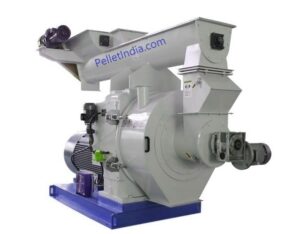
🔥 Key Points on Biomass Energy in India (with Figures & INR Costs) 🔥

1️⃣ Surplus Biomass in India 🇮🇳
2️⃣ Cost-Effective Energy 💰
3️⃣ Carbon Reduction Potential 🌍
4️⃣ Employment Generation 👷♂️
🌾 5️⃣ Types of Residue for Biomass Pellet Production
| Crop Residue | Surplus Availability (Mt) | Primary Uses |
| Rice Straw & Husk | 221.8 Mt | Co-firing, pelletizing, fodder |
| Wheat Straw | 193.7 Mt | Biomass power, fodder |
| Sugarcane Bagasse | 183.7 Mt | Industrial fuel, ethanol production |
| Cotton Waste | 22.5 Mt | Pellet fuel, paper industry |
| Maize Stalk & Cobs | 70.6 Mt | Fodder, power generation |
| Groundnut Shells | 22.0 Mt | Biofuel, heating applications |
| Mustard Residue | 22.1 Mt | Briquetting, industrial use |
| Other Oilseeds Waste | 44.7 Mt | Bioenergy, pellet production |
🔥 6️⃣ India’s Electricity Generation & Biomass Potential (State-Wise)
| State | Power Generation Potential (MW) | Biomass Residue Available (Mt) |
| Punjab | 3,500 | 15.8 |
| Uttar Pradesh | 6,000 | 20.5 |
| Maharashtra | 4,200 | 18.4 |
| Tamil Nadu | 2,500 | 9.1 |
| Madhya Pradesh | 3,800 | 12.3 |
| Gujarat | 2,900 | 8.3 |
| Rajasthan | 2,700 | 6.3 |
| West Bengal | 1,500 | 6.8 |
| Karnataka | 3,600 | 6.6 |
🌱 7️⃣ Climate Policy of India & Biomass Energy Role
🚀 8️⃣ Biomass Pellets vs. Raw Biomass Transportation Costs 🚚
🔚 Conclusion
📚 References by:
🔹 Central Electricity Regulatory Commission (CERC), 2015, Renewable Energy Tariff Report.
🔹 MNRE (Ministry of New and Renewable Energy), 2022, Biomass Power Policy Guidelines.
🔹 International Energy Agency (IEA), 2023, India Energy Outlook Report.
🔹 FAO (Food & Agriculture Organization), 2017, Global Biomass Pellet Market Study.
🔹 Council on Energy, Environment & Water (CEEW), 2023, Biomass Energy for Power Generation in India.


📞 Contact Us for Biomass Solutions
📍 Servoday Plants & Equipments Limited
📞 +91 9427210483 | +91 9427210484
📧 [email protected]
🌐 www.PelletIndia.com
👤 Contact Person: Sanjay Masuria
📲 WhatsApp: +91 9427210483
